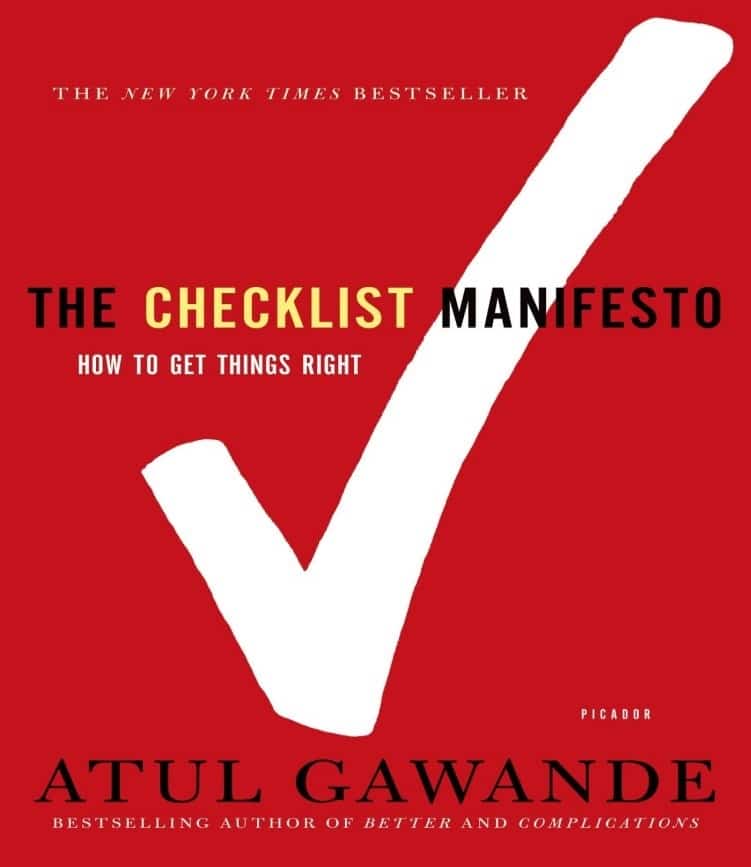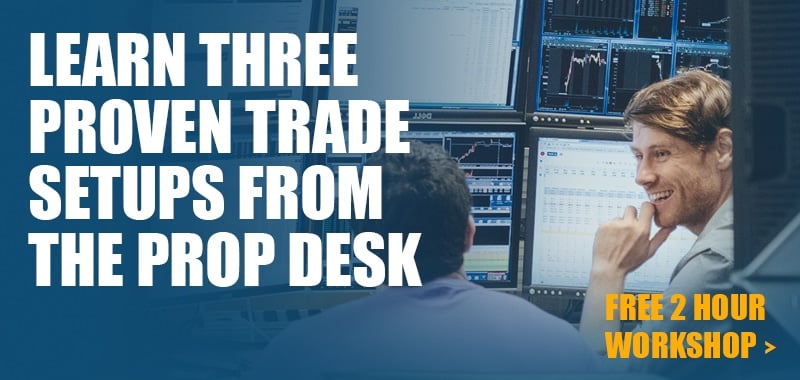By Bruce Bower
We asked the SMB community which topics they wanted to learn more about it in the upcoming “Peak Performance Trading and Investing” video course. Out of a list of ten topics, second place was ”Checklists – How to Filter Out The Noise and Make Better Decisions”.
This is an interesting topic because in order to discuss it, we first need to understand one thing:
As humans, we are crazy.
Yes, all of us. That includes me and you.
Much as we’d like to pretend that we are rational and completely in control of our emotions, the evidence is firmly opposed. The verdict is clear and definitive: as humans, we are heavily influenced by our emotions, instinct, irrational quirks and all kinds of other forces. For example, we are much more concerned about avoiding losses than making equivalent gains; we place more emphasis on recent information, even if it’s less important; and we make snap judgments and then rationalize them, rather than thinking through our decisions logically and step-by-step.
Nobel Prize winner Daniel Kahneman, author of the seminal work Thinking, Fast and Slow, summed up his 35 years of his research into human decision-making by writing that “We are very influenced by completely automatic things that we have no control over, and we don’t know we’re doing it”. But as we’ve seen, these “completely automatic things” can lead us astray in our decisions, especially in our financial decisions. What can we do about them?
For traders and investors, the key thing is to understand our two goals: to make smart risk/reward decisions and to make them consistently. The reason that you adopt a methodology or an approach to the markets is to filter out the noise and to focus on what matters. If you are investing in equities long-term, you won’t be paying attention to the latest weather reports or to key technical levels on the chart. If you are a short-term futures trader, then you don’t care about the footnotes in a specific company’s annual report. The other reason that you adopt a consistent approach is because every methodology should be built on an edge. There should be a kind of proven pattern that recurs and gives you the chance to make money. For longer-term investors, it means buying companies and assets at a discount to intrinsic value; for momentum traders, it means realizing that strength begets strength in the markets. Whatever it is, once you have formulated and researched a strategy that works, then you want to stick to it and reap the associated profits.
This obviously brings up a question: how do we stick to a strategy if we, as humans, aren’t consistent  and are buffeted by all kinds of unconscious, automatic forces that seem destined to make us poorer? The answer is to turn your methodology into a checklist, a list of simple routine actions to be completed. As Atul Gawande documents in his book The Checklist Manifesto, checklists are used in numerous fields to simplify complex tasks down into a series of simple steps; to make sure that people remember every step; and to avoid basic errors that can have an outsized impact. The example that made the most impact on me was when Dr. Pronovost launched an initiative to reduce line infections on IV lines. This is a relatively minor infection, but an infected IV line can take a fragile surgery patient and cause serious complications or even death if not avoided. By introducing a simple pre-operation checklist designed to avoid line infections, Dr. Pronovost managed to reduce their incidence to zero. Checklists manage complexity with similar results in other fields like aviation and construction.
and are buffeted by all kinds of unconscious, automatic forces that seem destined to make us poorer? The answer is to turn your methodology into a checklist, a list of simple routine actions to be completed. As Atul Gawande documents in his book The Checklist Manifesto, checklists are used in numerous fields to simplify complex tasks down into a series of simple steps; to make sure that people remember every step; and to avoid basic errors that can have an outsized impact. The example that made the most impact on me was when Dr. Pronovost launched an initiative to reduce line infections on IV lines. This is a relatively minor infection, but an infected IV line can take a fragile surgery patient and cause serious complications or even death if not avoided. By introducing a simple pre-operation checklist designed to avoid line infections, Dr. Pronovost managed to reduce their incidence to zero. Checklists manage complexity with similar results in other fields like aviation and construction.
What can we learn from this as traders and investors? The first lesson is that we should try to convert the basics of our methodology into a checklist format. Just like a pre-operation checklist, we should break our approach down into a series of a simple steps. The best would be yes or no steps—does a potential position meet this standard, yes or no? Then you go through the list step by step to see if you put on the position. Several prominent investors like William J. O’Neill use checklist-like approaches and have shared them with the world, giving us a compelling example.
The second thing we can learn is what specialists in other fields have learned: that checklists don’t restrain us. A checklist is not a narrow construct that prevents us from exercising any judgment or creativity. Rather, it’s there to make sure that we approach a potential investment with a logical, rational approach and that we don’t skip anything. It keeps us on track so that we avoid the irrational, emotional and undisciplined pitfalls on either side of the road. This approach frees up mental resources that we can devote to making more nuanced judgments or investigations. The famous researcher Roy Baumeister concluded in his book Willpower that humans have a limited reserve of decision-making power over the course of the day, and that once it is drawn down, we pretty much lose the ability to make good decisions. By using checklists, we are automating a lot of decisions or we are turning them into a series of simple decisions like “yes or no”. This conserves our limited supply of willpower and gives us the ability to make more decisions during the day and to be more effective at the times when we need to do a deeper investigation of something.
In my upcoming “Peak Performance Trading and Investing” video course series, I have devoted a whole lesson to checklists. We explore how they work; how to build an investment or trading checklist, with different examples; and how to use it for several different purposes, including position entry/exit, determining conviction, position sizing and risk management.


2 Comments on “How to Filter Out Noise and Make Better Decisions”
A basketball blog was what turned me on to the Checklist Manifesto book last summer and the very passage that Bruce refers to (about preventing central line infections) had a major impact on me. I went back to a nasty drawdown I experienced in Mar-Apr 2014 and examined it for “procedures” I could have implemented to lessen the slide. I developed a 7 step checklist to regulate both the quality and the quantity of my entries that I’m still following to this day.
The major item concerned the pace of my capital commitment and the fact that I can look back over the past several months and see that I religiously stuck to this schedule I set for myself was a major step forward towards my becoming a more disciplined trader. (And truth be told, also serves as a continuing source of amusement for me – I can’t believe that I actually stuck to it ! )
that’s an amazing result– and I’m glad that you were able to implement that change and make it stick. Those are the kind of results that we can generate once we have a solid plan and learn to stick to it…